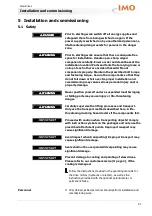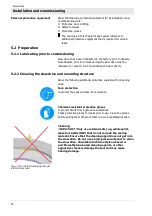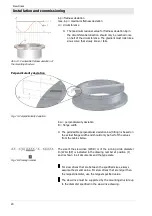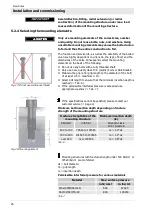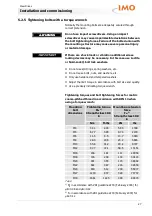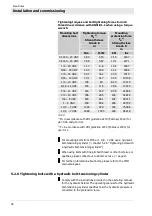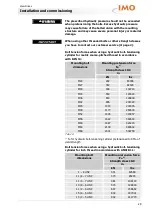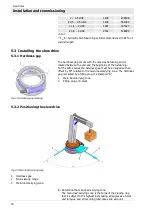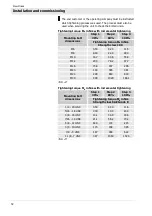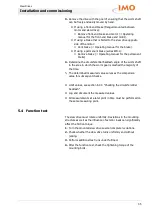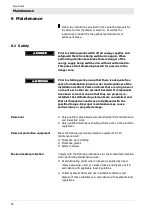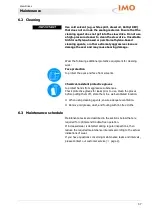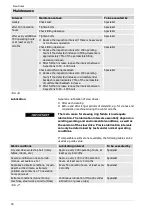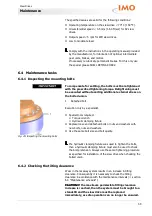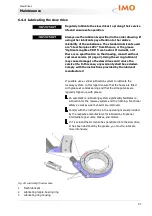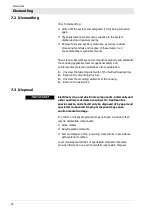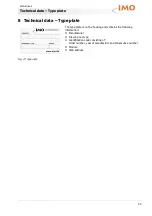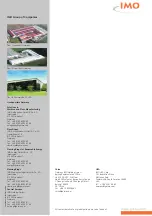
Slew Drives
Installation and commissioning
35
3.
Remove the drive with the goal of ensuring that the worm shaft
can be freely and easily moved by hand.
If using a front-end brake (flanged-mounted between
motor and slew drive):
Remove front-end brake and motor (
Operating
manual for the front-end brake and motor).
If using a brake that is bolted to the slew drive opposite
side of the motor:
Vent brake (
Operating manual for the brake).
If using a permanent brake (series WD-L):
Remove brake (
Operating manual for the permanent
brake)
4.
Determine the circumferential backlash angle of the worm shaft
in the area in which the worm gear is meshed the majority of
the time.
The determined measured value serves as the comparison
value for subsequent checks.
Limit values, see section 6.4.3 "Checking the circumferential
backlash".
Log and document the measured values.
All measurements at a later point in time must be performed on
the same measuring point.
5.4
Function test
The slew drive must rotate uniformly. Deviations in the mounting
structure as well as the influence of exterior loads can significantly
affect the friction torque.
1.
Turn the mounted slew drive several complete revolutions.
2.
Check whether the slew drive turns uniformly and without
jerking.
3.
Perform additional test runs under full load.
4.
After the function test, check the tightening torque of the
mounting bolts.

